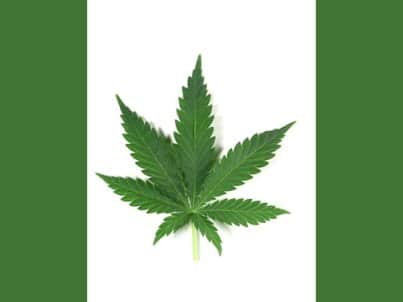
 With the impending announcement that marijuana legalization will become a reality by July 1, 2018, Justin Trudeau’s Liberal government is now showing every intention of making good on its promise to change the cannabis landscape in Canada.
With the impending announcement that marijuana legalization will become a reality by July 1, 2018, Justin Trudeau’s Liberal government is now showing every intention of making good on its promise to change the cannabis landscape in Canada.
The industry is already revving its engines, with an eye both towards the growing quadrant of Canadians already registered for access to medical marijuana as well as to Canada’s recreational pot smokers who will soon be enjoying a legal puff —and paying growers, distributors and the government good money to do so.
On Sunday, an anonymous senior government official spoke to the CBC News about a Liberal caucus meeting on the marijuana file this past weekend, saying that Canada Day, 2018, would be the targeted date to make pot legal, with ministers being briefed by MP Bill Blair, former Toronto chief of police, on the planned rollout.
What we know so far is that 18 will likely be the minimum federal age for purchasing pot, that the provinces will be given the right to set a higher limit and to decide on distribution and that Canadians wishing to grow their own will be given a four-plant per household limit.
Beyond that, much is still up in the air, including how big the Canadian marijuana industry will become, how many people it will employ and how much tax revenue the government stands to take in.
Predictions differ. Earlier last year, a report from CIBC World Markets suggested that legalized marijuana could become a $10-billion a year industry, with $5-billion of that collected in tax revenue by provincial and federal governments. Based on a comparison with the state of Colorado’s experience in legalization, which estimated its 2016 pot industry at around $1-billion US, the report concluded that, adjusted to the Canadian population and put in Canadian dollars, the projection comes in at a cool $10-billion, up to half of which could potentially be collected in sales taxes and licensing. “But only if all the underground sales are effectively curtailed,” said CIBC economist, Avery Shenfeld, who downplayed the overall impact on the Canadian economy, saying, “That’s on the order of 0.25% of GDP, no barnburner.”

Then last fall, Deloitte upped the ante in a report that said legalization could result in a $22.6-billion industry for Canada. The group conducted a survey of 5,000 Canadian adults, 1,000 of whom self-identified as recreational marijuana consumers, and determined that marijuana sales could start out at around $5-billion per year, a number similar to the Canadian market for spirits like whisky, vodka, rum, but could eventually bulge to $8.7-billion, which would put it comparable to wine sales. Add on an ancillary market involving things like growers and testing labs and chipping in pot tourism, taxes and fees, the result is $23-billion in economic growth. Mark Whitmore, vice-chair of Deloitte, told the Toronto Star that legalization could be like the dot-com boom of the 90s in terms of new growth. “It has that kind of feel to it,” said Whitmore. “There’s a lot of froth, a lot of interest in this space and a lot of people think there’s going to be an opportunity.”
And opportunity is certainly the name of the game, as Canada’s publicly traded marijuana companies have been performing tremendously of late, gaining an extra boost with the recent government confirmation of next year’s legalization. “What this means is we can all plan, we can all invest, we can all start hiring and start building the world’s leading consumer cannabis system,” says Cam Battley of Alberta-based Aurora Cannabis Inc. to the Financial Post.
Yet not everyone is convinced we’re in for an economic heyday. Most notably, the government itself has poured water on the fire, with the parliamentary budget office last November releasing a report that pegged first-year sales tax revenue within the range of $350 to $950-million and arguing that the government will be faced with the difficult task of balancing accessibility to legalized pot with government aims of decreasing marijuana use within Canada’s youth population. “We’re talking millions and millions —not billions and billions— of dollars of revenue,” Jean-Denis Frechette, the parliamentary budget officer to the Toronto Star.

Uncertainty remains over how many people will be lighting up (or popping edibles) come next summer. Current statistics report that about 42 per cent of adult Canadians have used marijuana at some point in their lives and 12.2 per cent have indulged at least once during the past year. The multimillion dollar question is how many of those once-in-a-lifetime users will shift over to the more regular use category once marijuana becomes legal?
Truly, the change represents a societal shift. Marijuana is the most widely used illicit substance in Canada, now with a build-up of over one hundred years of prohibition behind it. The jury is very much still out on how long it might take, if ever, for Canadian sensibilities to shift and for the pot smoker to be viewed in a similar light to your average beer drinker. That mental move could be generational in length. Or it could be practically immediate.
“Ultimately, no one knows exactly how legalization will impact the cannabis market,” says Frechette, “in particular, how use patterns will evolve, especially among frequent or youth consumers; how illicit and legal market prices will respond; the extent to which Canadians will participate in the recreational, medical and illicit markets; or how consumer tastes and product offerings, including value-added products, will change.”
But for best guesses, we can look to other regions where legalization has already taken place. State-wise, while some countries have decriminalized marijuana and others made the sale for medical purposes legal, none aside from Uruguay have gone so far a legalize both the sale and possession for recreational purposes. Even the Netherlands with its famous 40-year history of being a marijuana mecca still has only decriminalized its sale in designated locations.
The most worthwhile comparisons come from US states, seven of which along with the District of Columbia have now legalized cannabis for recreational use. Colorado and Washington have the longest run of experience with legalization, both having done so in 2012. The statistics collected so far prove interesting on many fronts.
In reality, legalization in Colorado and Washington has produced surprisingly little social change along a number of societal measures. Principally, use has not shot up in either state. A state report in Colorado found a 5 per cent rise in marijuana use for adults but no rise in use by youth. In fact, the report found that among high school students, use went from about 23 per cent in 2005 to 20 per cent in 2014, two years after legalization. Similarly, a recent Washington State youth health survey found that regular marijuana use had fallen among teen and pre-teen groups.
“So far, so good,” was the message from a November 2016 report from the Drug Policy Alliance in the US, which concluded that in states which legalized recreational pot, youth use was not impacted by the change. The study also found that arrests for marijuana possession, cultivation and distribution sank by 46 per cent in Colorado and low-level marijuana court filings in Washington fell by 98 per cent. Marijuana legalization also had little impact on traffic fatalities in either state and while marijuana poisonings among small children increased, the numbers remained negligible, according to the report.
Similar conclusions were reached in a report by the Cato Institute, which found that state marijuana legalizations have had “minimal effect” on marijuana use and societal factors, even crime rates. “On the basis of available data, however, we find little support for the stronger claims made by either opponents or advocates of legalization,” concludes the report. “The absence of significant adverse consequences is especially striking given the sometimes dire predictions made by legalization opponents.”

Economically, legalization has had its effects, first and foremost in terms of higher-than-expected tax revenues. Colorado generated $135 million (US) in recreational marijuana revenue in 2015 and Washington took in $70 million in its first year of sales, twice what was originally forecasted.
But beyond tax revenues, the news appeared less rosy. The Cato Institute report reveals that while Colorado did see a measurable rise in employment following legalization, the same did not occur in Washington, nor in Oregon or Alaska, which adopted legislation in 2014. Police protection expenditures showed little change and state GDP was not significantly impacted, either. “Although it is hard to disentangle marijuana-related economic activity from broader economic trends, the surges in economic output predicted by some proponents have not yet materialized,” reads the report. “Similarly, no clear changes have occurred in GDP per capita.”
Ultimately, of course, none of these results south of the border dictate exactly what Canada’s experience will look like, but the smart money probably won’t bet against it. Canadians, as they do with most things, will likely take a measured approach to marijuana legalization. Reefer madness will not overtake the land. Some new businesses will sprout up, the feds and the provinces will get their cut and the rest of us will keep heading out for beers on the weekend.
Comment
One thought on “How big can Canada’s marijuana sector get?”
Leave a Reply
You must be logged in to post a comment.




 Share
Share Tweet
Tweet Share
Share




Intelligent discussion.